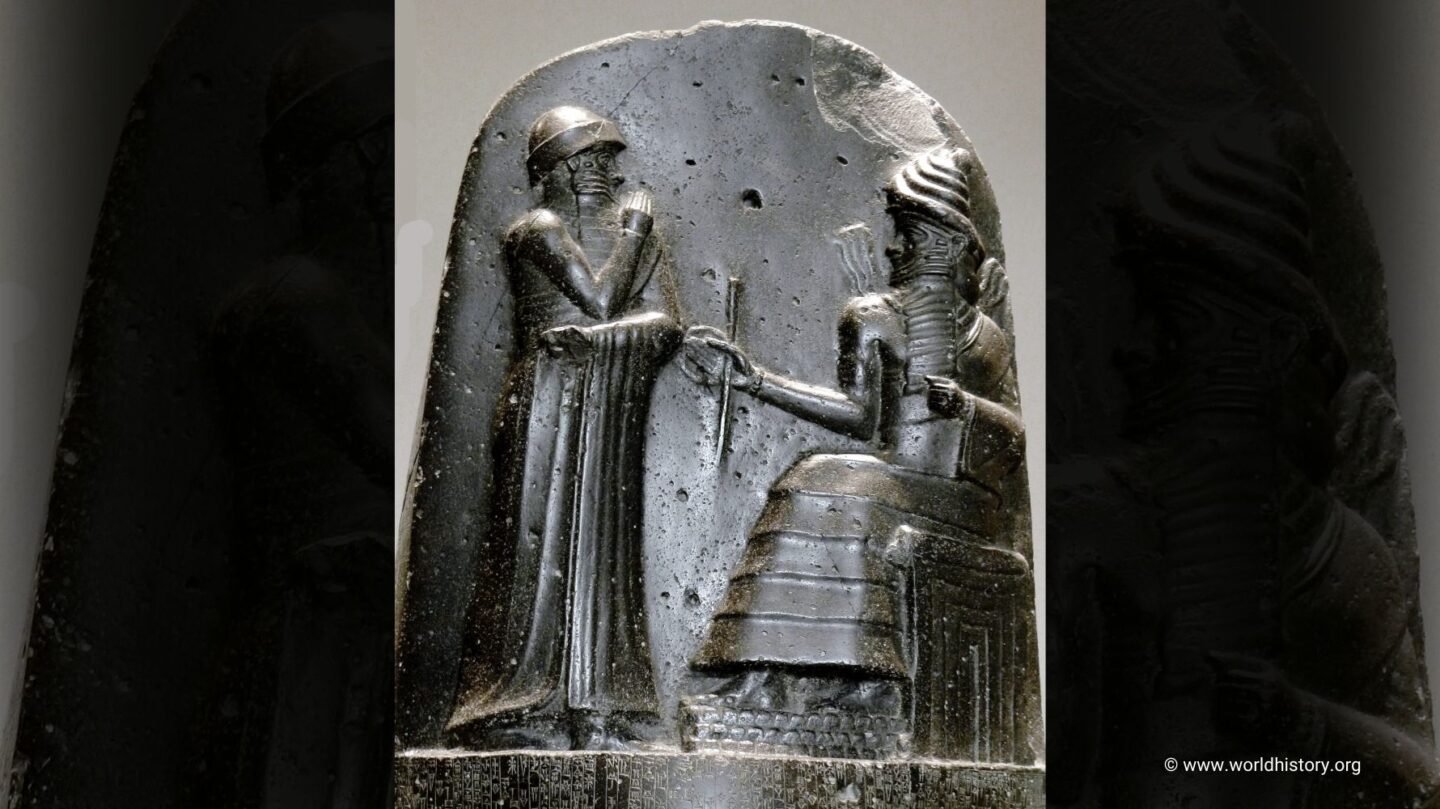The Origins of the Code
The Code of Hammurabi, one of the earliest and most comprehensive sets of laws in human history, was established by King Hammurabi of Babylon around 1754 BCE. Hammurabi ruled over Mesopotamia during the Old Babylonian Empire, and his legal code reflects the complexities of a growing and diverse society.
Inscribed on a large basalt stele, the Code contains 282 laws that address various aspects of daily life, including trade, property, marriage, and crime. It stands as a testament to the development of organized governance and the importance of written laws in maintaining social order.
A Society Governed by Law
The Code of Hammurabi was not just a collection of rules; it was a statement of the king’s authority and his commitment to justice. At the top of the stele, a relief depicts Hammurabi receiving the laws from Shamash, the Babylonian god of justice, emphasizing their divine origin and the king’s role as a mediator between the gods and his people.
The laws themselves were detailed and specific, covering a wide range of issues. For example:
- Trade and Commerce: The Code regulated business transactions, including contracts, loans, and debts. It established penalties for fraud and ensured fair practices in trade, essential for the prosperity of Babylon’s economy.
- Family and Marriage: Family life was a central focus, with laws governing marriage, inheritance, and the rights and responsibilities of spouses and children.
- Criminal Justice: The Code introduced the principle of “an eye for an eye” (lex talionis), ensuring that punishments were proportional to the crimes committed. However, the severity of penalties often depended on the social status of the victim and the offender.
Justice or Inequality?
While the Code of Hammurabi was groundbreaking in its efforts to create a structured legal system, it also reflected the social hierarchies of its time. Society was divided into three main classes: the free landowners, the dependent class, and slaves. The laws applied differently depending on a person’s social status.
For instance, the penalty for harming a free man was often more severe than for harming a slave. Women had certain rights under the Code, such as the ability to own property and seek divorce, but their status remained subordinate to men. These inequalities highlight the challenges of balancing justice with the societal norms of the time.
Preserving Order in Ancient Babylon
The Code of Hammurabi played a crucial role in maintaining order and stability in Babylon. By publicly displaying the laws, Hammurabi ensured that his subjects knew their rights and obligations, reducing the likelihood of disputes. The stele’s placement in a public space also served as a symbol of Hammurabi’s commitment to justice and governance.
This transparency in lawmaking was revolutionary, setting a precedent for legal systems in other ancient civilizations. It demonstrated that written laws could serve as a tool for both governance and the protection of citizens.
The Enduring Legacy of Hammurabi’s Code
Although the Babylonian Empire eventually fell, the influence of Hammurabi’s Code persisted. It inspired later legal systems in the ancient Near East, including those of the Assyrians and Hittites. Its principles of justice and proportional punishment can also be seen in modern legal systems.
The Code of Hammurabi remains an enduring symbol of humanity’s early attempts to create a fair and organized society. Today, the stele is housed in the Louvre Museum in Paris, where it continues to captivate visitors and scholars as a cornerstone of legal and cultural history.
A Milestone in Human Civilization
The Code of Hammurabi is more than just a collection of ancient laws; it represents a pivotal moment in the development of civilization. It reflects the need for order, justice, and governance in complex societies, laying the foundation for legal traditions that continue to shape the world today.
